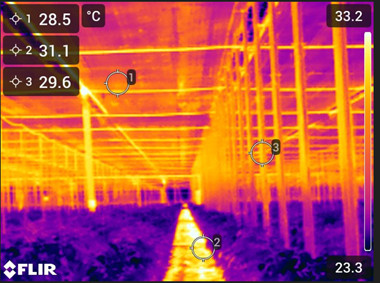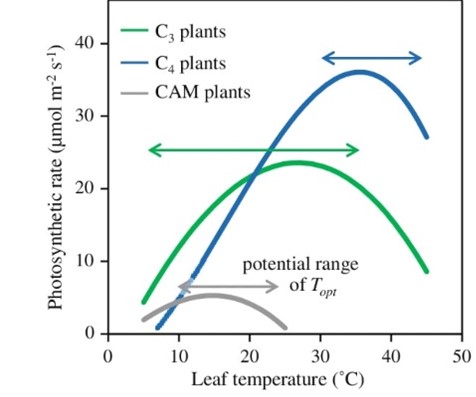In Almería, more and more traditional greenhouses are improving technologically, and producers are noticing the changes
Agriculture, especially greenhouse production, represents an important economic pillar for Almeria, thanks to its extensive greenhouse area. Experts like Nelson Pérez bring valuable knowledge to the agricultural industry. The interview given by Nelson to Antonio del Rosal, editor of AgroDifusión, during his participation in AgroRadio, provides a unique opportunity to share with growers all about Svensson's Climate Solutions.
Almeria, in southeastern Spain, is a city known for its subtropical-desert climate, with mild winters and hot, dry summers, with an average annual temperature of around 19°C (66°F). Agriculture is an important economic pillar in the region, especially for its greenhouse production that allows the cultivation of tomatoes, peppers, cucumbers, eggplants, zucchini, melons, watermelons, and more. The greenhouse area in Almeria covers thousands of hectares, making it one of the largest concentrations of greenhouses in the world.
The technology used in these greenhouses includes automated irrigation systems and, of course, climate screens. Nelson Pérez, Manager at Svensson for Spain and Portugal with more than 15 years of experience in the field of Greenhouse Climate, knows these technologies perfectly. A few weeks ago Nelson had the opportunity to be interviewed by Antonio del Rosal, editor of AgroDifusión, a leading platform that generates agricultural content in Spain, during the interview on AgroRadio, Nelson shared with listeners everything about Svensson's insect nets and climate screens.

Insect nets designed to tackle climate challenges in Almería
In the Almeria market, Svensson has developed three different types of insect control nets, Nelson begins the interview. The Xsect Balance Max net, tested by the specialists of the agrotextiles laboratory at the University of Almería, Antonio Álvarez and Rocío Oliva, is a 23x18 net type that was designed to exclude the entry of the whitefly and also increase ventilation.
"With 100% protection against whiteflies and a higher number of threads per square centimeter, it provides better ventilation than a 10x16 net (40 mesh). Balance Max is considered one of the best in the world for protection against virus transmission by whiteflies and aphids," Nelson comments.

But Almeria's greenhouses not only face the presence of whiteflies. Xsect Xtra and Xsect Xtreme nets, with 61 threads per square centimeter and 66 threads per square centimeter respectively, are designed to protect crops against thrips. "These nets have low porosity," comments Nelson, "so some ventilation renewal simulations are necessary. At Svensson, we can conduct these tests according to the type of greenhouse, in order to determine the amount of air renewals per hour, the plant stress level and the return on investment of these nets," Nelson adds.
Technological advances in greenhouses: the key role of climate screens
The interview with Antonio continues, and now it's time to talk about climate screens. Nelson describes them as Svensson's product star in high-tech greenhouses. "Today, more and more traditional greenhouses in Almería are having technological improvements with the installation of climate screens, and growers are seeing the benefits. We have greenhouses that are already using automated retractable screens, climate computers and even automations inside the greenhouse for opening and closing the windows. We have done some trials where we have managed to increase yields by up to 3 or 4 kilograms per plant with the use of climate screens," explains Nelson Pérez.


Nelson also mentions that it is possible to visit growers in their greenhouses to take measurements with a thermal camera in order to see in real-time the level of stress on the plants with the increase of temperature in the greenhouses, helping growers to make more informed crop decisions.


Optimizing greenhouse cultivation with Svensson's insect control and climate screens
After Nelson's explanation of Svensson's insect control nets and climate screens, Antonio comments and asks, "We are talking about protection measures, tools and crucial materials in a greenhouse. What would be the problems that a crop could have by not using these measures?" Nelson responds as follows:
In the case of the insect control nets, the main problem that is avoided is the transmission of viruses, in addition to the damage and other problems caused by insects. We have growers who used to use 10x16 (40 mesh) or 10x20 (50 mesh) nets, but after changing to our nets, they now have no virus transmission. "These are very simple alternatives to avoid problems," says Nelson.

Regarding the screens, Nelson comments that the main benefit in the greenhouse is the temperature increase without the need for heating during the winter (2-3 degrees Celsius) by keeping longwave energy inside the greenhouse, as well as the diffusion effect and protection against shortwave energy when it enters or prevents it from entering into the greenhouse. He also mentions an overall reduction in crop temperature, which is beneficial for C3 type plants, such as bell pepper and cucumber, which should not exceed 28 degrees.
"Here in Almeria, we have a tendency to exceed this maximum, which is harmful for these crops," comments Nelson to conclude the interview.
The interview between Nelson and Antonio del Rosal from AgroDifusión on AgroRadio gives us a unique insight into how technological advances play a crucial role in the agricultural industry. From the installation of automated retractable screens to real-time measurements of plant stress with thermal cameras, Svensson continues to lead the way towards a more efficient and sustainable agriculture in Almeria.
